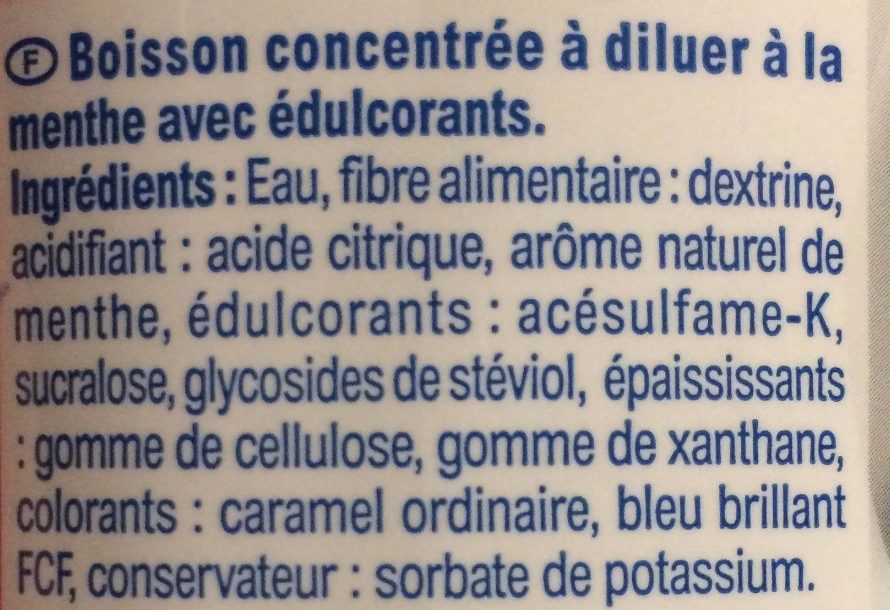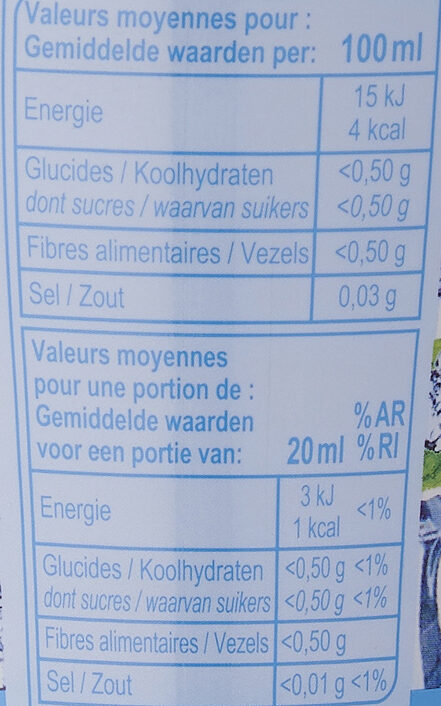Sirop Zéro Menthe - Carrefour - 75 cl
This product page is not complete. You can help to complete it by editing it and adding more data from the photos we have, or by taking more photos using the app for Android or iPhone/iPad. Thank you!
×
Some of the data for this product has been provided directly by the manufacturer Carrefour.
Barcode: 3245414241718 (EAN / EAN-13)
Common name: Boisson concentrée à diluer sans sucres avec édulcorants à la menthe.
Quantity: 75 cl
Packaging: Metal, Bottle, Jug, fr:Bouchon plastique
Brands: Carrefour
Categories: Beverages, Syrups, Artificially sweetened beverages, Flavoured syrups, Mint syrups, Sugar-free flavoured syrups
Labels, certifications, awards:
Low or no sugar, Green Dot, Made in France, No sugar, With sweeteners
Stores: Carrefour, carrefour.fr
Matching with your preferences
Environment
Carbon footprint
Packaging
Transportation
Other information
Preparation: Agitez avant emploi. Versez 1 volume de boisson concentrée pour 9 volumes d'eau plate ou gazeuse.
Conservation conditions: Avant ouverture, conservez votre boisson concentrée à température ambiante. Pour une dégustation optimale, à consommer de préférence avant fin / N° de lot : voir sur le haut du bidon. Après utilisation, rebouchez-le bien et conservez-le au réfrigérateur pendant une période n'excédant pas 2 mois.
Customer service: Interdis - TSA 91431 - 91343 MASSY Cedex - France
Report a problem
Data sources
Product added on by openfoodfacts-contributors
Last edit of product page on by roboto-app.
Product page also edited by beniben, binnette, date-limite-app, desan, driveoff, ecoscore-impact-estimator, julie-yuka, kiliweb, org-carrefour, packbot, quentinbrd, scanbot, segundo, yuka.CLJSBfS5Du09JsaKzY0-5hG1SOzEGPpIQWwxog, yuka.CZxaLM6tAvEmHPT7jaUIgTWLCLf8GtlrH1Ukog, yuka.FI9oGY6aT84HDsrz144a2R2xT-rqANFCInEvog, yuka.L71nYdOAIewLF8XR6r0F2AmdG9vmCfJfA34KoQ, yuka.LolSOMe5IJ19N8bK6IVu2x_rS9ftXdJfEmAMog, yuka.U-BBHo_QRMI9LMWMy9oO_SGXH8a5Pqd1GmEhow, yuka.V2FNZEgvd2N2cUlLbXN3TzNBbk8zdUJPM00rSUJqeXZJczhTSWc9PQ, yuka.WVlkY0FQNEJpYVlRcThZRi94NkVvUFp1eUxPV2JVVG5BclF4SVE9PQ, yuka.sY2b0xO6T85zoF3NwEKvllcXTt3V8z3VDT_gyHCg9t6fDq7mQesi4bf5b6s, yuka.sY2b0xO6T85zoF3NwEKvlmdED-OAumiZbUzmpk2oxdGNE6bOU-kqu7jdYqs, yuka.sY2b0xO6T85zoF3NwEKvlmpmbeT0jgLCDEztqE3R6ou8DqH4PY14zY6lP6s.









